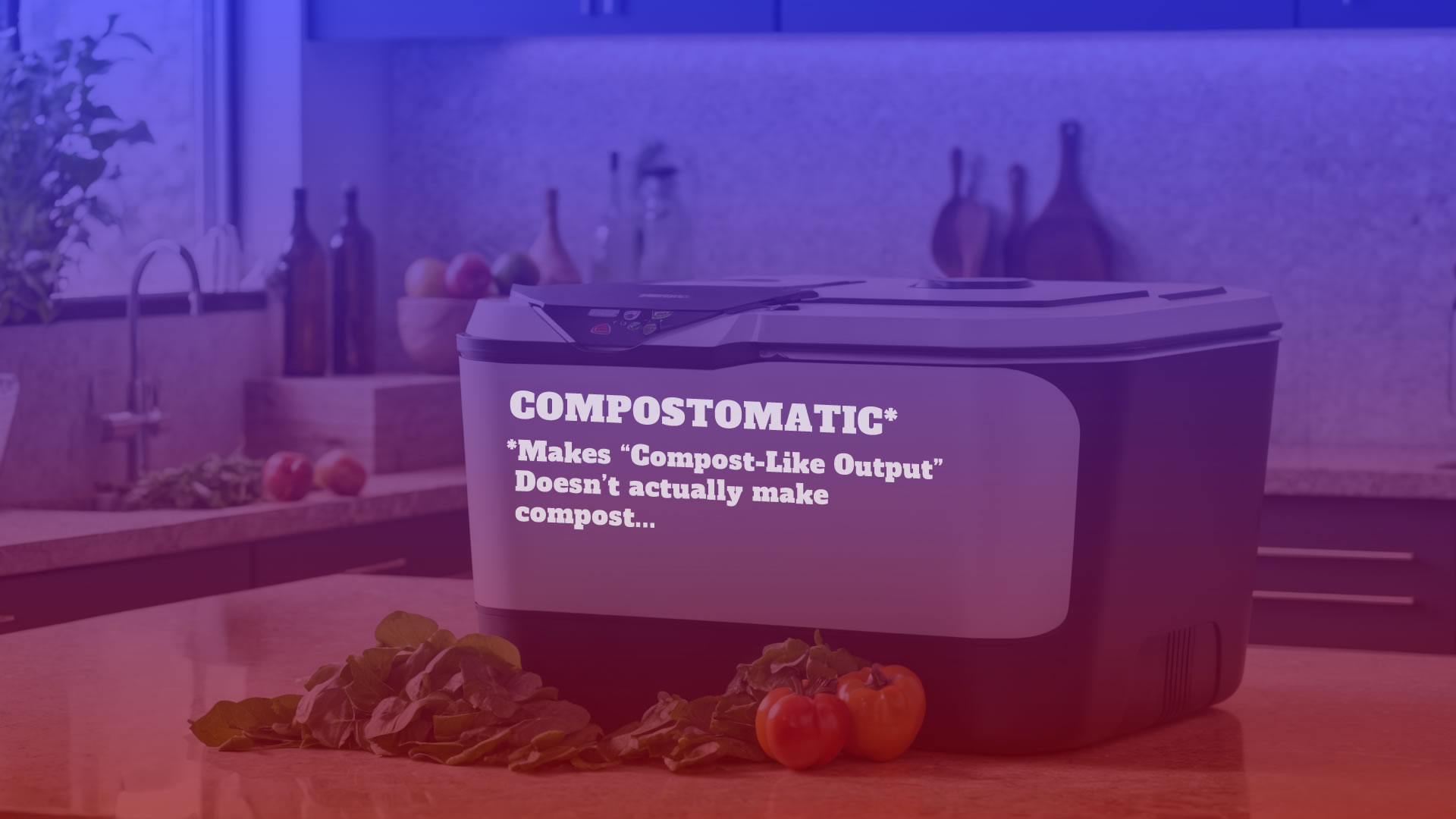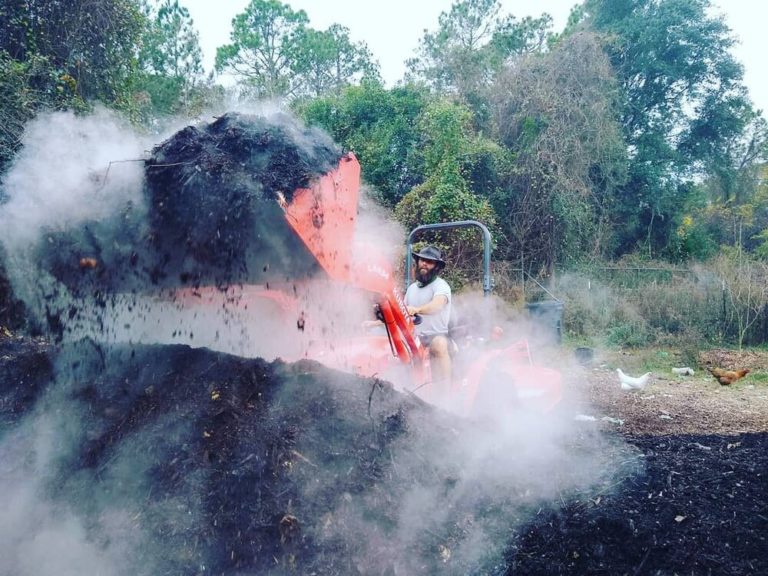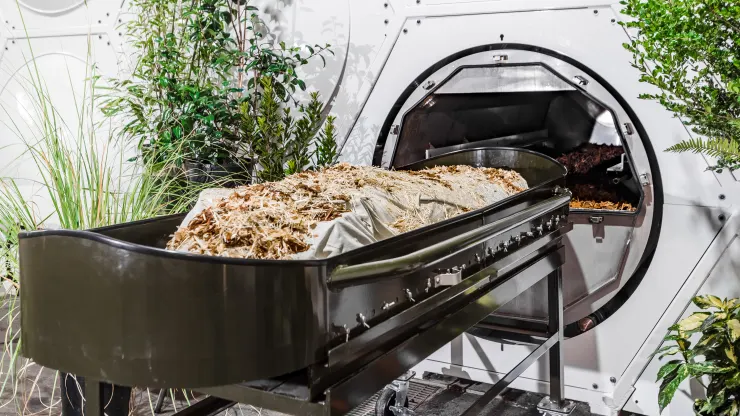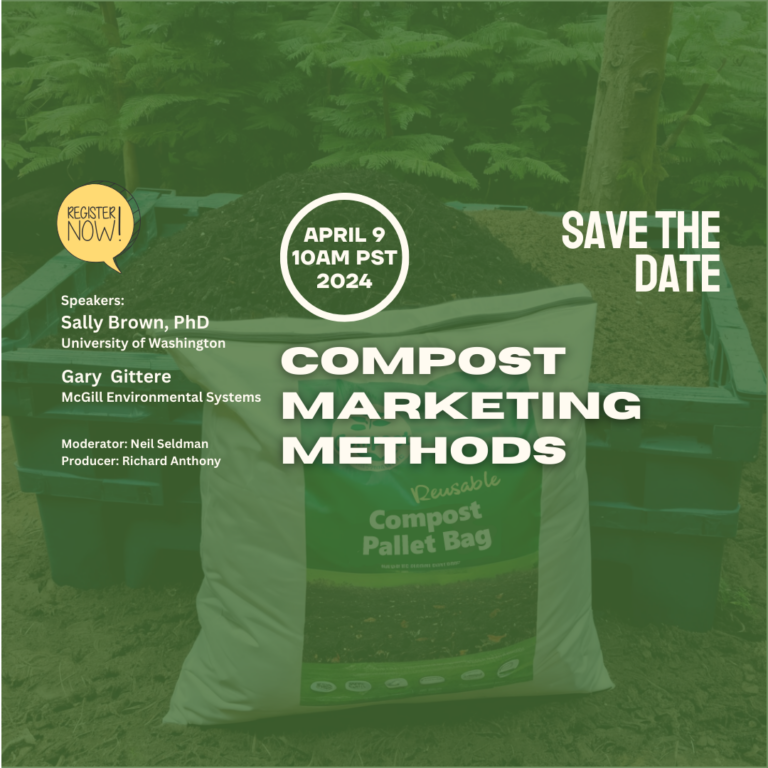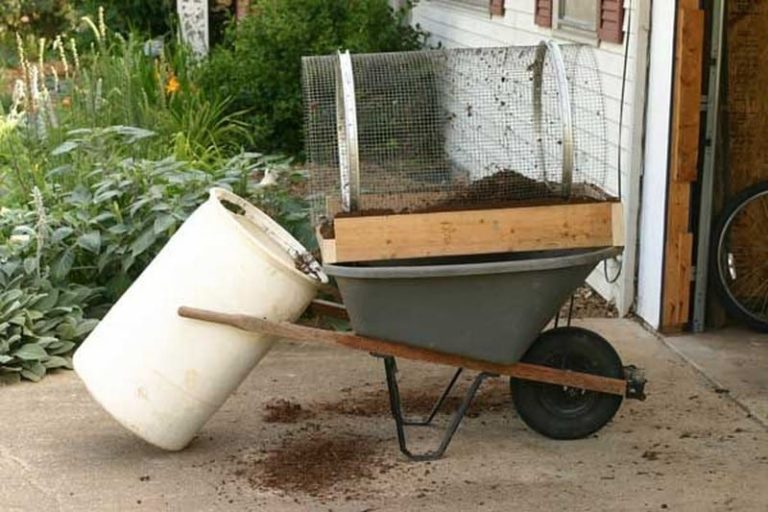Tabletop Composting Machines Don’t Compost
In recent years, small electric “composting” machines marketed for home use have grown in popularity. These devices promise to quickly transform food scraps, yard waste, and other compostable materials into usable compost right on your countertop. However, sustainability advocates point out that the end product of these machines is not true compost.
Composting is the natural biological process of organic matter breaking down into a rich, soil-like material called humus. This transformation happens through the activity of microorganisms and invertebrates in the compost pile. Critically, composting is an exothermic process, meaning the biological activity generates heat. Backyard compost piles can reach temperatures of 130-140°F (54 – 60°C) through this natural heating. Proper composting also requires oxygen flow and moisture maintenance.
The small electric composting machines rely on electricity, not natural biological processes. They bake and dehydrate the organic matter, then grind it up into small pieces. This requires the consumer to add heat, usually by plugging in the machine. The end product looks like coarse, dry soil, leading many to call it compost. However, sustainability experts refer to it as “compost-like output” or CLO.
While CLO may look finished, it isn’t even partway through the composting process. The high heat in the machines kills most of the beneficial microorganisms, leaving little biological activity. CLO lacks the nutrients and soil benefits of true compost. If you spread CLO in your garden like compost, it can actually damage plants by robbing nitrogen from the soil.
Proper composting requires a balance of “green” nitrogen-rich materials (food scraps, grass clippings) and “brown” carbon-rich materials (leaves, wood chips) to create the right carbon-to-nitrogen ratio. However, food waste collected from homes or businesses is typically very high in greens without much browns. Community-scale digestion facilities are well equipped to handle the imbalanced green-heavy food waste streams typical of urban settings. They can rebalance and prepare the materials for clean, efficient large-scale composting in a way that decentralized food scrap processing cannot easily achieve.
Takeaways:
Diversion of compostable organics out of landfills and into compost is our main goal. CLO is not compost. Not even close. It requires energy input, so it’s not efficient. It’s basically lightly baked dehydrated food grounds. It still needs to go through a composting process before it can be “fed” to plants. In almost no situation should you need a “compost machine.”
Composting Organics – Order of Preference
- Home composting – The best option is composting food scraps on-site and using the finished compost in your own garden. It closes the loop right at home.
- Community composting – Collecting neighborhood food scraps for composting and using the compost in community gardens keeps materials local. Better than reliance on external facilities.
- Municipal composting – City or county-level composting that redistributes the end product locally for public spaces allows keeping organic resources in the region.
- Commercial composting – Can process large volumes but requires transport. Seek operations aligned with local environmental and social values.
- Local aerobic digestion – Where population density produces mostly food scraps, pre-processing via fermentation can optimize composting.
Note that levels 6, 7 and 8 are long-term less sustainable systems. There has to be a logical reason backed up by data showing there is no other more efficient method before they should be adopted.
- Regional anaerobic digestion – Centralized anaerobic digestion systems may help divert food waste in dense urban areas lacking space for community-scale composting. However, be mindful of zero waste principles, like avoiding perceived “disposal” of organics.
- Small on-site dehydrator systems – Vessel-based dehydrators or digesters should be limited to situations where decentralized composting is truly infeasible, like ships or very cold regions. Avoid solely for convenience, prioritize coordinating community collection first.
- Home dehydrators – These should be a last resort. Always try coordinating community collection and composting before resorting to a dehydrator unit.
In summary: Prioritize self-sufficiency first, then local community solutions before larger-scale options. But any organics diversion from landfills is better than wasting resources. If CLO machines are the only method for some urban residents to divert food waste, it’s better than sending organics to the landfill. Still, CLO is not a replacement for proper composting, which remains the goal.
Dive Deeper
The US Composting Council’s View calls them “Food Scrap Dehydrators” and suggests that calling them “composting” machines is false advertising. According to USCC: “Marketing these devices as ‘composters’ and further suggesting the resulting material may be used in applications suitable for compost is misleading, confusing to the public, and damaging to the composting industry.” Here’s USCC’s official position (pdf).
For a review and an interview with the CEO of Lomi, Matthew Bertulli, check out Kevin Espiritu’s video on the YouTube channel Epic Gardening: Should You Buy a Lomi Composter? Bertulli himself said most people don’t need a food scrap dehydrator. Considerations that weren’t addressed include a required charcoal filter and accelerator tablets that must be purchased on a regular basis, so this too is energy input.

